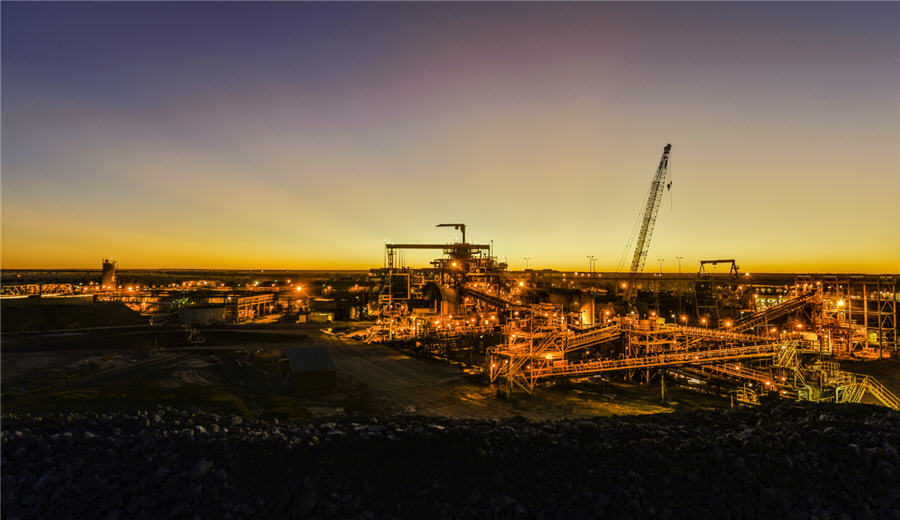Column: Australia should lead the energy transition, but is it missing the boat?

It is no secret that Australia is one of the countries best placed to take advantage of the energy transition, given its abundance of minerals, renewable energy potential, stable government and proximity to the growing markets of Asia.
But sentiment was somewhat downbeat at this week’s massive gathering of the mining and related sectors at the International Mining and Resources Conference (IMARC) in Sydney.
While speaker after speaker outlined available opportunities, there were always the caveats that Australia is risking missing the boat and losing out to competitor nations when it comes to leading the energy transition and the minerals needed to make the switch from fossil fuels to cleaner power.
Australia is the world’s largest exporter of lithium and iron ore and is a major producer of copper, nickel, manganese and aluminum.
It is also the world’s second-largest shipper of coal and liquefied natural gas, which underscores that it is still largely dependent on fossil fuels for much of its export revenues, which are at risk as the energy transition gathers accelerates.
It is for this reason that the mining industry sees the imperative to embrace a clean energy future, and the ambition is that Australia maintains its leading role as a supplier of the key minerals.
But there is also the increasing risk that Australia is being left behind, with other countries with access to cheaper capital and energy, as well as easier government regulations and processes, starting to pull ahead.
The iron ore sector is one example.
Australia supplies about two-thirds of China’s imports of the key raw material, and in turn China uses the iron ore to produce about half the world’s steel.
Steel making is carbon intensive and contributes about 8% of global emissions, given its reliance on coal as the main energy source.
Decarbonizing steel is thus a key plank of the energy transition and Australia should be the global leader.
The idea is to take iron ore and use hydrogen produced from green energies such as solar and wind to beneficiate it into a product such as hot briquetted iron, which in turn can be made into steel using electric furnaces.
But in order for this to happen, the iron ore sector is going to need cheap electricity, and in vast quantities.
Dino Otranto, the chief executive of Fortescue Group, Australia’s third-biggest iron ore miner, told IMARC on Tuesday that nothing would happen without cheap electricity.
With globally competitive energy costs Australia can “fully take our commodities and turn them into products the world wants,” Otranto said.
Electricity dilemma
The problem comes in delivering the cheap electricity. While miners talk of building partnerships with companies and increasing collaboration, the issue always comes back to cost.
Why would a solar energy company invest billions of dollars to build plants, only to sell the electricity produced at such a low cost to the mining sector, so it can make profits selling cleaner products to China and other buyers in Asia?
No company would, meaning that it will be difficult to get the price of renewable energy cheap enough in Australia to make it competitive with countries such as those in the Middle East, which already are providing low-cost power to miners such as Brazil’s Vale for iron ore beneficiation.
In past decades Australia’s state and federal governments took the lead in providing cheap electricity to fuel industrial development, an example being the use of state-built hydropower in Tasmania to power aluminum, manganese and zinc smelters.
But governments are more cash-strapped currently and wary of imposing costs on taxpayers complaining of the cost of living, meaning that the capital to turn Australia into a green superpower will likely have to be largely private.
One role governments could play more effectively is cutting down on the time needed and the complexity of approvals, and while the politicians at IMARC were unanimous in saying they were doing just that, the mining sector is privately considerably more sceptical.
For now, the main challenge for the mining sector is working out how to turn vision into reality, and at a scale that keeps Australia at the forefront of the energy transition.
(These are the opinions of the author, Clyde Russell, a columnist for Reuters.)
(Editing by Clarence Fernandez)
{{ commodity.name }}
{{ post.title }}
{{ post.date }}


Comments